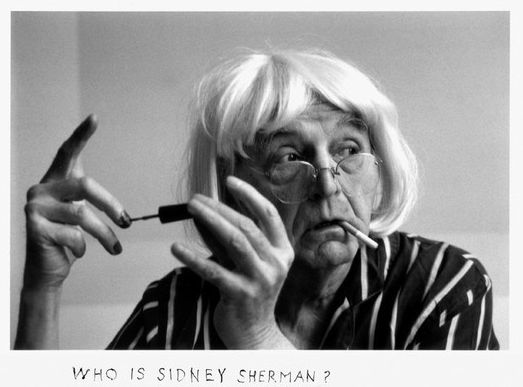I think photographs should be provocative and not tell you what you already know. It takes no great powers or magic to reproduce somebody’s face in a photograph. The magic is in seeing people in new ways.
—Duane Michals
Some artists search for a technique, a genre, a style (a voice?) and once they have discovered it, they make it theirs and settle down. As “mature” artists, they are happy to produce subtle variations on the same theme, over and over, across the span of their careers. Duane Michals is, quite emphatically, not one of those artists.
Over the course of 55 years of creative output, Michals has ceaselessly reinvented himself, never content to settle on a single anything. He has staged photographs, he has written on photographs, he has drawn, painted and manipulated photographs, he has constructed elaborate fictional narratives—in short, he has never allowed himself to be limited merely by what was done before in the genre. Perhaps his striving, roving, ceaseless search for new forms of expression is best summed up by his philosophy, “My pictures are more about questions, not about answers.”
Given his tremendously varied body of work, putting together a retrospective on Michals was a tall task. Linda Benedict-Jones, the curator at the Carnegie Museum of Art in Pittsburgh, was up for the challenge. Over the course of five years, she worked exhaustively on her favorite subject—she mined his archives, worked closely with the man himself—and in the end, produced a magnificent exhibition, “Storyteller: The Photographs of Duane Michals.” The show offers an amazingly varied (yet admirably structured) summation of this pioneer’s contribution to the field of photography.
Benedict-Jones was first drawn to Michals because from the very first time she saw his work, she felt that he was truly extending the meaning and possibilities of what a photograph could be. From photography’s narrative potential to its raw, personal expression (of the self, of desire, of many things), Michals blew away the idea of objectivity, of a Life picture-story and opened up frontiers that are still being explored today.
Given the challenge of condensing and communicating Michals’ immense oeuvre to an audience, Benedict-Jones elected to organize the show around themes, rather than chronologically. In doing so, the exhibition highlights how Michals had a boundless creativity but also returned to themes over and over throughout his career. For example, the themes in the show range from “Children’s Stories” to “Desire,” “In the Mind’s Eye” as well as “The Artistic Kind,” showcasing the breadth of the man’s voracious approach to photography.
Duane Michals is an artist who has been much imitated, highly influential and endlessly re-inventive. Although we can see signs of his groundbreaking influence everywhere we look, there is no better place to re-discover his genius than at its very source.
—Alexander Strecker
Storyteller: The Photographs of Duane Michals
Curated by Linda Benedict Jones
Publisher: Prestel
Hardcover: 240 pages
Editor’s Note: “Storyteller: The Photographs of Duane Michals,” opens Saturday at the Carnegie Museum of Art in Pittsburgh and will be on display until Feb. 16, 2015.




